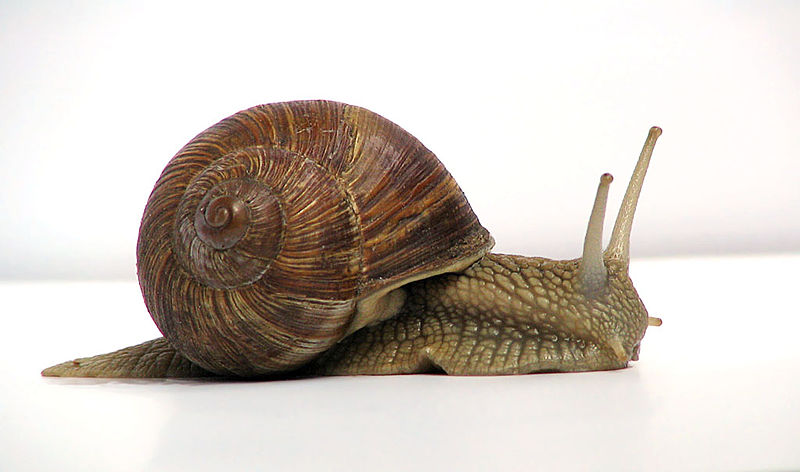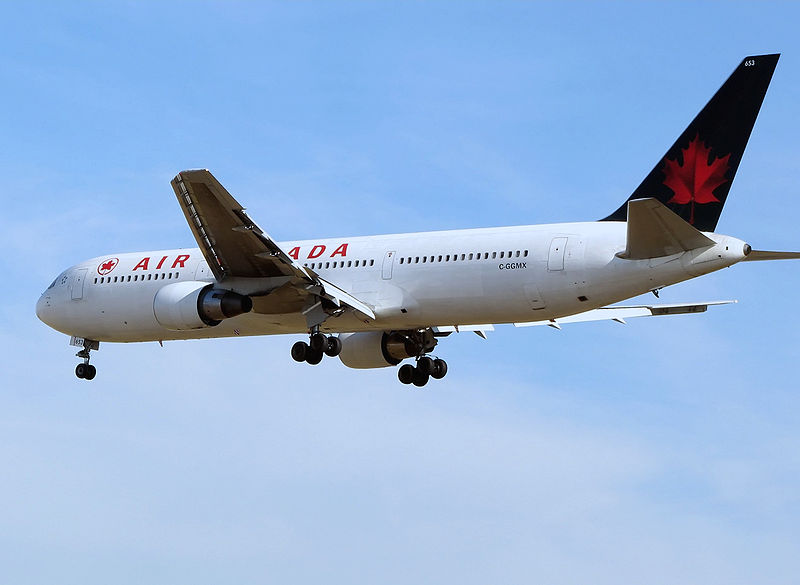Learning Objectives
By the end of this section, you will be able to:
- Explain the dimensional analysis (factor label) approach to mathematical calculations involving quantities
- Use dimensional analysis to carry out unit conversions for a given property and computations involving two or more properties
It is often the case that a quantity of interest may not be easy (or even possible) to measure directly but instead must be calculated from other directly measured properties and appropriate mathematical relationships. For example, consider measuring the average speed of an athlete running sprints. This is typically accomplished by measuring the time required for the athlete to run from the starting line to the finish line, and the distance between these two lines, and then computing speed from the equation that relates these three properties:
[latex]\large\text{speed}=\frac{\text{distance}}{\text{time}}[/latex]
An Olympic-quality sprinter can run 100 m in approximately 10 s, corresponding to an average speed of [latex]\large\frac{\text{100 m}}{\text{10 s}}=\text{10 m/s}[/latex].
Note that this simple arithmetic involves dividing the numbers of each measured quantity to yield the number of the computed quantity (100/10 = 10) and likewise dividing the units of each measured quantity to yield the unit of the computed quantity (m/s = m/s). Now, consider using this same relation to predict the time required for a person running at this speed to travel a distance of 25 m. The same relation between the three properties is used, but in this case, the two quantities provided are a speed (10 m/s) and a distance (25 m). To yield the sought property, time, the equation must be rearranged appropriately:
[latex]\large\text{time}=\frac{\text{distance}}{\text{speed}}[/latex]
The time can then be computed as [latex]\large\frac{\text{25 m}}{\text{10 m/s}}=\text{2.5 s}[/latex].
Again, arithmetic on the numbers (25/10 = 2.5) was accompanied by the same arithmetic on the units (m/m/s = s) to yield the number and unit of the result, 2.5 s. Note that, just as for numbers, when a unit is divided by an identical unit (in this case, m/m), the result is “1”—or, as commonly phrased, the units “cancel.”
These calculations are examples of a versatile mathematical approach known as dimensional analysis (or the factor-label method). Dimensional analysis is based on this premise: the units of quantities must be subjected to the same mathematical operations as their associated numbers. This method can be applied to computations ranging from simple unit conversions to more complex, multi-step calculations involving several different quantities.
Conversion Factors and Dimensional Analysis
A ratio of two equivalent quantities expressed with different measurement units can be used as a unit conversion factor. For example, the lengths of 2.54 cm and 1 in. are equivalent (by definition), and so a unit conversion factor may be derived from the ratio,
[latex]\large\text{(2.54 cm = 1 in)}\text{ or }\frac{\text{2.54 cm}}{\text{1 in}}\text{ or }\text{ 2.54}\frac{\text{cm}}{\text{ in}}[/latex]
Several other commonly used conversion factors are given in Table 1.
| Table 1. Common Conversion Factors | ||
|---|---|---|
| Length | Volume | Mass |
| 1 m = 1.094 yd | 1 L = 1.057 qt | 1 kg = 2.205 lb |
| 1 in. = 2.54 cm (exact) | 1 cm3 = 1 mL | 1 lb = 453.59 g |
| 1 km = 0.6214 mi | 1 T (tbsp) = 14.9 mL | 1 oz = 28.35 g |
| 1 m = 39.37 in | 1 qt = 4 cups | 1 lb = 16 oz |
| 1 ft = 12 in. | 1 gal = 4 qt | |
| 1 yd = 3 ft | 1 gal = 3.785 L | |
| 1 mi = 5280 ft | 1 L = 1000 mL | |
| 1 ft = 30.48 cm | 1 pt = 473.2 mL | |
| 4.9 mL = 1 tsp | ||
When we multiply a quantity (such as distance given in inches) by an appropriate unit conversion factor, we convert the quantity to an equivalent value with different units (such as distance in centimeters). For example, a basketball player’s vertical jump of 34 inches can be converted to centimeters by:
[latex]\large\text{34}\cancel{\text{in}}\times \frac{\text{2.54 cm}}{1\cancel{\text{in}}}=\text{86 cm}[/latex]
Since this simple arithmetic involves quantities, the premise of dimensional analysis requires that we multiply both numbers and units. The numbers of these two quantities are multiplied to yield the number of the product quantity, 86, whereas the units are multiplied to yield [latex]\large\frac{\text{in}\times \text{cm}}{\text{in}}[/latex] . Just as for numbers, a ratio of identical units is also numerically equal to one, [latex]\large\frac{\text{in}}{\text{in}}=\text{1,}[/latex] and the unit product thus simplifies to cm. (When identical units divide to yield a factor of 1, they are said to “cancel.”) Using dimensional analysis, we can determine that a unit conversion factor has been set up correctly by checking to confirm that the original unit will cancel, and the result will contain the sought (converted) unit.
The ability to construct and apply proper conversion factors is a very powerful mathematical technique in chemistry. You need to master this technique if you are going to be successful in this and future courses.
Example 1: Using a Unit Conversion Factor
The mass of a competition frisbee is 125 g. Convert its mass to ounces using the unit conversion factor derived from the relationship 1 oz = 28.349 g (Table 1).
Check Your Learning
Convert a volume of 9.345 qt to liters.
Beyond simple unit conversions, the factor-label method can be used to solve more complex problems involving computations. Regardless of the details, the basic approach is the same—all the factors involved in the calculation must be appropriately oriented to insure that their labels (units) will appropriately cancel and/or combine to yield the desired unit in the result. This is why it is referred to as the factor-label method. As your study of chemistry continues, you will encounter many opportunities to apply this approach.
Example 2: Computing Quantities from Measurement Results and Known Mathematical Relations
What is the density of common antifreeze in units of g/mL? A 4.00 qt sample of the antifreeze weighs 9.26 lb.
Check Your Learning
What is the volume in liters of 1.000 oz, given that 1 L = 1.057 qt and 1 qt = 32 oz (exactly)?
Example 3: Computing Quantities from Measurement Results and Known Mathematical Relations
While being driven from Philadelphia to Atlanta, a distance of about 1250 km, a 2014 Lamborghini Aventador Roadster uses 213 L gasoline.
- What (average) fuel economy, in miles per gallon, did the Roadster get during this trip?
- If gasoline costs $3.80 per gallon, what was the fuel cost for this trip?
Check Your Learning
A Toyota Prius Hybrid uses 59.7 L gasoline to drive from San Francisco to Seattle, a distance of 1.3 × 103 km.
- What (average) fuel economy, in miles per gallon, did the Prius get during this trip?
- If gasoline costs $3.90 per gallon, what was the fuel cost for this trip?
Example 4: Conversion of a Derived Unit

Pronghorn Antelope, Cabin Lake Road, Fort Rock, Oregon. Source: Alan D. Wilson, CC BY-SA 3.0 <https://creativecommons.org/licenses/by-sa/3.0>, via Wikimedia Commons
The pronghorn, a mammal indigenous to the interior western and central North America, is the fastest land mammal in the Western Hemisphere. The pronghorn can run at speeds of up to 88.5 km/h.
What will be this speed in km/min?
Check Your Learning
A common garden snail moves at a rate of about 0.203 m/min, what is the speed the snail in meters per second?
Chemistry Is Everywhere: The Gimli Glider
On July 23, 1983, an Air Canada Boeing 767 jet had to glide to an emergency landing at Gimli Industrial Park Airport in Gimli, Manitoba, because it unexpectedly ran out of fuel during flight. There was no loss of life in the course of the emergency landing, only some minor injuries associated in part with the evacuation of the craft after landing. For the remainder of its operational life (the plane was retired in 2008), the aircraft was nicknamed “the Gimli Glider.”
The 767 took off from Montreal on its way to Ottawa, ultimately heading for Edmonton, Canada. About halfway through the flight, all the engines on the plane began to shut down because of a lack of fuel. When the final engine cut off, all electricity (which was generated by the engines) was lost; the plane became, essentially, a powerless glider. Captain Robert Pearson was an experienced glider pilot, although he had never flown a glider the size of a 767. First Officer Maurice Quintal quickly determined that the aircraft would not be able make it to Winnipeg, the next large airport. He suggested his old Royal Air Force base at Gimli Station, one of whose runways was still being used as a community airport. Between the efforts of the pilots and the flight crew, they managed to get the airplane safely on the ground (although with buckled landing gear) and all passengers off safely.
What happened? At the time, Canada was transitioning from the older English system to the metric system. The Boeing 767s were the first aircraft whose gauges were calibrated in the metric system of units (liters and kilograms) rather than the English system of units (gallons and pounds). Thus, when the fuel gauge read 22,300, the gauge meant kilograms, but the ground crew mistakenly fueled the plane with 22,300 pounds of fuel. This ended up being just less than half of the fuel needed to make the trip, causing the engines to quit about halfway to Ottawa. Quick thinking and extraordinary skill saved the lives of 61 passengers and 8 crew members—an incident that would not have occurred if people were watching their units.
Video source: Unit conversion by keyj (https://viuvideos.viu.ca/media/Unit+Conversion/0_o671v9j6)
Exercises
All conversion problems below can be solved using the conversion factors provided within the question or in Table 1. Some questions can be solved in more than one way.
Volume Conversions
- How many milliliters of a soft drink are contained in a 12.0 fl oz can? (1 fl oz = 29.6 mL)
- A barrel of oil is 42.0 gal. How many liters of oil are in a barrel?
- The Reliant Robin, a small three-wheeled car produced by the Reliant Motor Company during the 1970’s in England, has a fuel tank capacity of 27 liters. What is the tank capacity in gallons?
- A bottle of soda has a volume of 16.0 fl oz. How many gallons does the bottle contain? (1 fl oz = 29.6 mL)
- Many medical laboratory tests are run using 5.0 μL blood serum. What is 5.0 μL in pints?
- A certain pancake recipe calls for 3.5 tsp of baking powder to be used to make the batter. How many cups of baking powder is 3.5 tsp?
Mass Conversions
- Is a 197-lb weight lifter light enough to compete in a class limited to those weighing 90 kg or less?
- A weight lifter lifted 192 kg in a move called the clean and jerk. What was the mass of the weight lifted in pounds (lb)?
- If an aspirin tablet contains 325 mg aspirin, how many ounces (oz) of aspirin does it contain?
- A paperclip has a mass of 0.030 oz. What will be the paperclips mass in centigrams (cg)?
Length Conversions
- The diameter of a red blood cell is 3 × 10−4 in. What is the diameter of a red blood cell in centimeters?
- The average distance between the Moon and the Earth measures 238,857 miles. What is this distance in kilometers?
- Lake Ontario is the third deepest Great Lake after lakes Superior and Michigan. The maximum depth of Lake Ontario is 802 ft. What is the maximum depth in meters?
- Interstate I-90 is the longest Interstate Highway in the United States at 3021 miles. How megameters is this distance?
- Watkins Glen International road course is 3.450 miles in length. What is this length in yards?
Conversions Involving Derived Units
- A person spends $50.00 on gas for their vehicle. If the cost of the gas is $3.93 per gallon, how many liters of gas will have been purchased?
- Usain Bolt, eight-time Olympic gold medalist, ran the 100-meter event with an average speed of 10.4 m/s. What is this speed in miles per hour?
- The distance of a transatlantic trip from Southampton, UK to New York, USA is 3185 nautical miles (nmi). If a ship is traveling at 42.6 km/h, how many days will it take for the ship to complete the crossing? (1 nmi = 1.151 mi)
- The track record for the fastest stock car at Talladega Speedway is 212.809 miles per hour, set by Bill Elliott in 1987. If the track length is 4.28 km, how many seconds will it take to complete two laps around the track?
Candela Citations
- Introductory Chemistry- 1st Canadian Edition . Authored by: Jessie A. Key and David W. Ball. Provided by: BCCampus. Located at: https://opentextbc.ca/introductorychemistry/. License: CC BY-NC-SA: Attribution-NonCommercial-ShareAlike. License Terms: Download this book for free at http://open.bccampus.ca
- Chemistry. Provided by: OpenStax College. Located at: http://openstaxcollege.org. License: CC BY: Attribution. License Terms: Download for free at https://openstaxcollege.org/textbooks/chemistry/get


